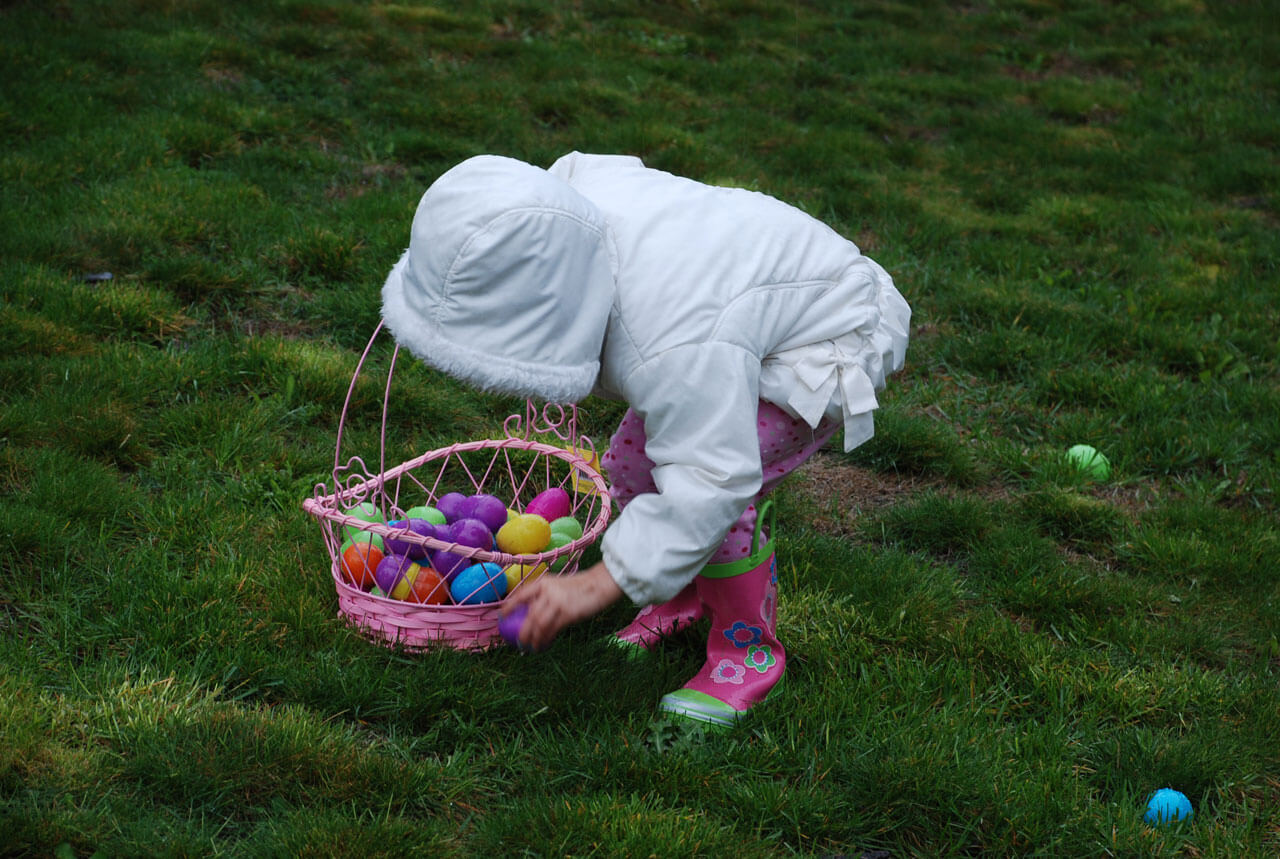Assuming your choosing to use plastic eggs filled with candies and prizes for your Easter egg hunt, there are a few things you should know about what to fill them with. If most of your guests are above the age of 5, you won’t probably need to worry about choking hazards, but in the event you are hosting for younger children, you will want to provide them Easter egg fillers they aren’t likely to choke on like cereals, animal crackers, and food that easily dissolves, toy cars, or hair accessories. Purchasing larger plastic eggs for younger children and smaller for the older children is a great idea. For children older than 5, you should still exercise caution when selecting candy. Filling Easter eggs with peanut-, dairy-, and gluten-free candy is best for sensitive children.
If you are dying, decorating with, or eating Easter eggs, safety should be a priority. Eggs, like meat, can carry salmonella and should be treated as any other hazard. Wash your hands thoroughly when working with the dyes (which are also not the healthiest for ingestion), keep eggs refrigerated before and soon after boiling, and don’t ingest eggs that have cracked for fear of the egg inside being penetrated with dye.
Salmonella can also be carried by animals, so if you have bunnies, chicks, or other Easter animals as guests at your Easter egg hunt, exercise caution and use it as an opportunity to educate children on how to thoroughly wash their hands. Hand-sanitizer can be a good Easter egg filler as well!
Now that we’ve gotten some main points of safety out of the way, the Easter egg hunt preparation itself has some safety opportunities to offer. Where the eggs are placed is essential in the chidren’s safety. Here are the things you should know:
- Keep eggs at or below eye level of the children.
- Don’t hide eggs near anything electrical
- Don’t hide eggs in, on, under or around glass.
- Don’t hide eggs in natural holes in the ground or trees.
- Don’t hide eggs in any plant life that has thorns, is poisonous or potentially dangerous in any way. If you don’t know the name of the plant, don’t hide the egg there.
- Don’t hide eggs in any animal’s home, eating or play area.
- Don’t hide eggs in bathrooms, attics, basements, or anywhere there are potentially dangerous tools and chemicals, or anywhere you know that pesticides or chemicals have been sprayed.
- Discard cracked or damaged eggs
One way to be sure that you know where all your eggs have been hidden and that they are in safe places for children to be, especially if you’ve delegated a team to hide them, is to provide printed maps of the property they can mark the eggs on. You can further identify the eggs by color, and any associated information you need to know. No safety measure should replace proper adult supervision. “Helpers” can wear brightly colored shirts, bunny ears, or aprons and assist the children while they look.



